Outforia Quicktake: Key Takeaways
- Fireflies are carnivorous during their larval stage and eat snails, worms, or slugs, while adult fireflies mainly consume nectar and pollen.
- Fireflies belong to the insect family Lampyridae and are actually beetles, not flies.
- There are roughly 2,000 different species of fireflies worldwide, with over 170 species in North America.
- Adult fireflies use bioluminescence to produce light in their abdomens, which they can control to create patterns and signals to attract mates.
- Habitat loss, light pollution, pesticides, and climate change all pose threats to firefly populations.
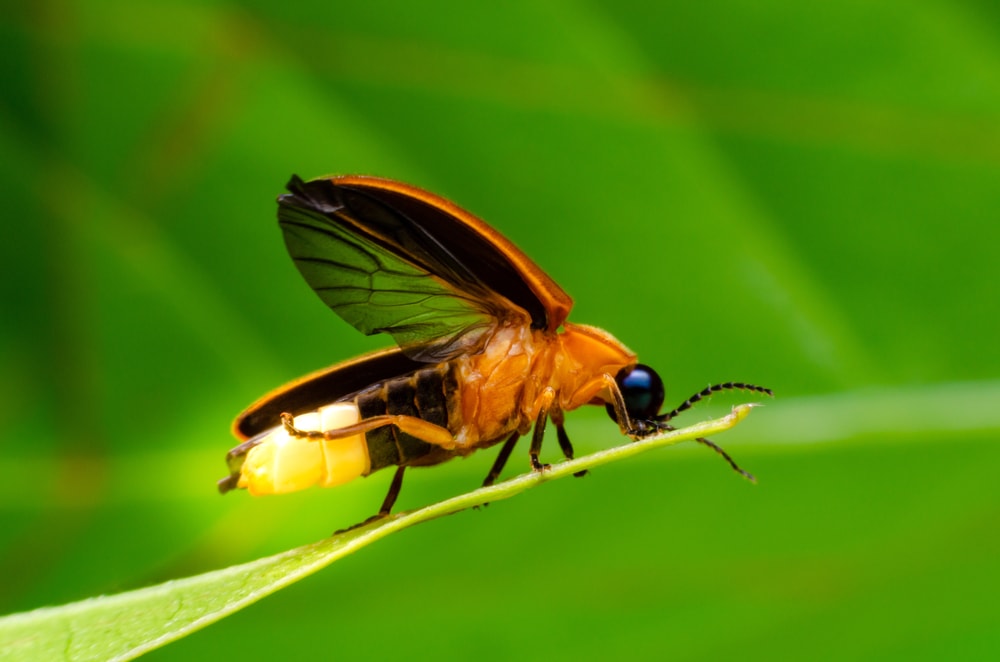
What Do Fireflies Eat? All About Their Diet and Eating Habits
Fireflies are carnivorous when in their larval stage. They inject their snail, worm, or slug prey with a paralyzing chemical. The adult beetles eat mainly nectar, but also pollen and other fireflies. Some adults do not eat at all.
Fireflies are not actually flies! They are insects, but they are beetles. Beetles which have the amazing ability to create bioluminescent light from their abdomens! Bioluminescence is the emission of light from a biological organism.
Fireflies belong to the insect family Lampyridae. This comes from the Greek word for ‘shining’.
The abdomen on a beetle is where their stomach and internal organs are. It is the body cavity between the chest and the back end of the insect.
Adult fireflies may eat nothing at all. When they do eat their main meal is vegan – nectar and pollen from flowers!
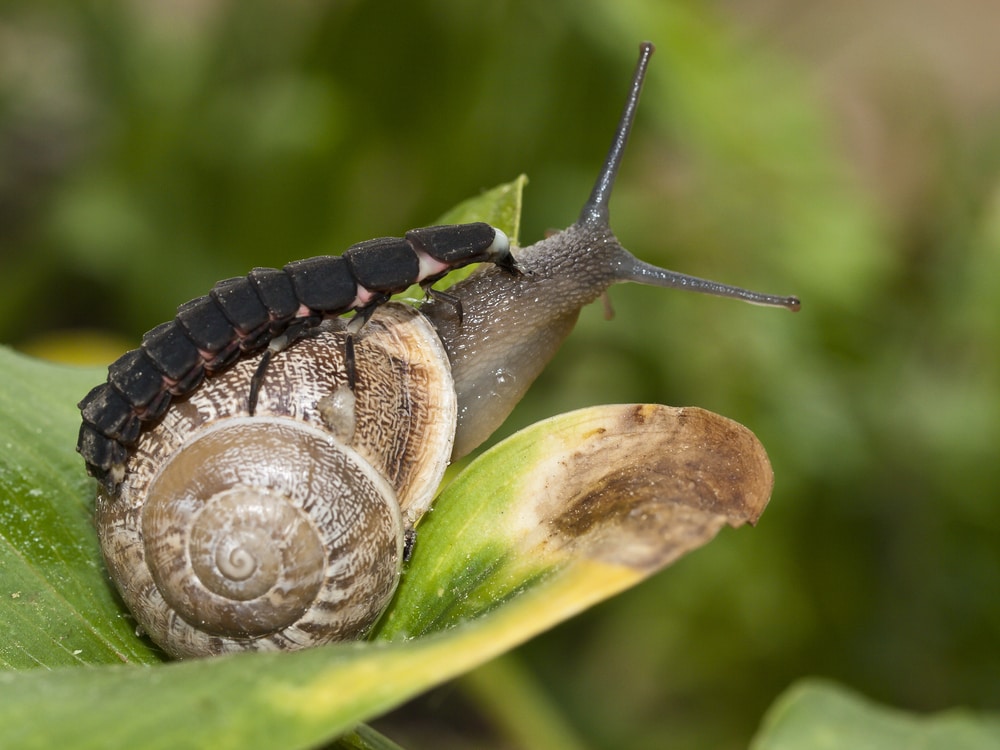
Although some species may also chow down on other fireflies if feeling a bit hungry! They will drink fruit juice from a slice of apple or similar fruit.
Larval fireflies are carnivorous. They immobilize slugs, snails and worms by injecting them with a special chemical. They are then free to feast on their paralyzed prey at leisure. The larvae use digestive enzymes to do this. These both paralyze and digest their prey.
Charming. Would you come if a firefly larva invited you to dinner?
Why Are They Not a Fly But a Beetle?
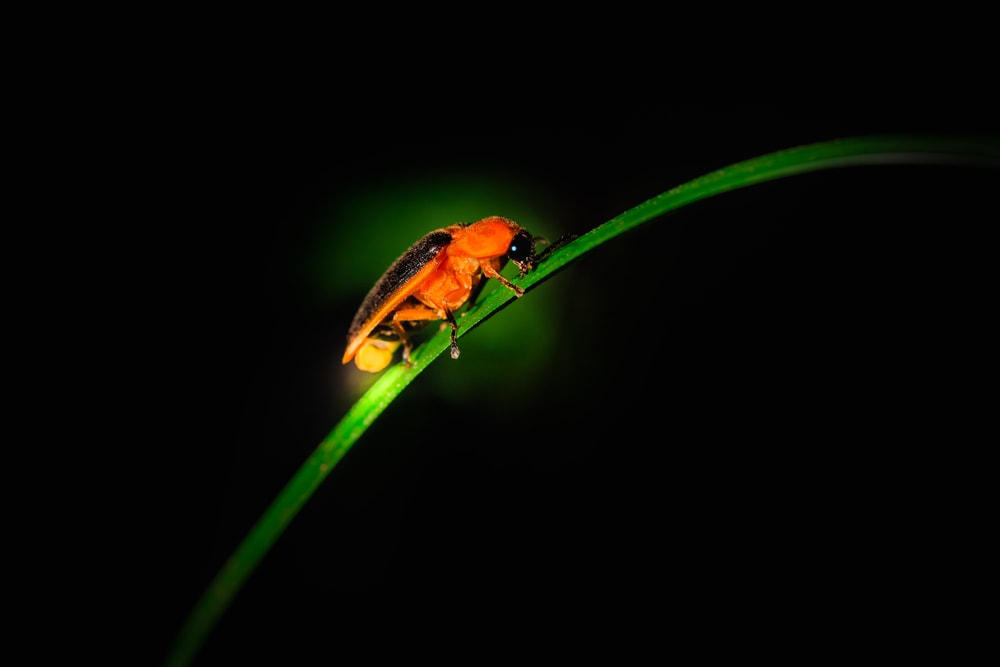
A firefly is in the beetle (Coleopteran) family as it has a hard case surrounding its body A fly doesn’t have this hard case.
This case is actually made of a pair of modified wings, called elytra. So this means a beetle has two sets of wings, but only one is used for flight.
Fireflies are also known as ‘lightning bugs’.
Where Do Fireflies Live?
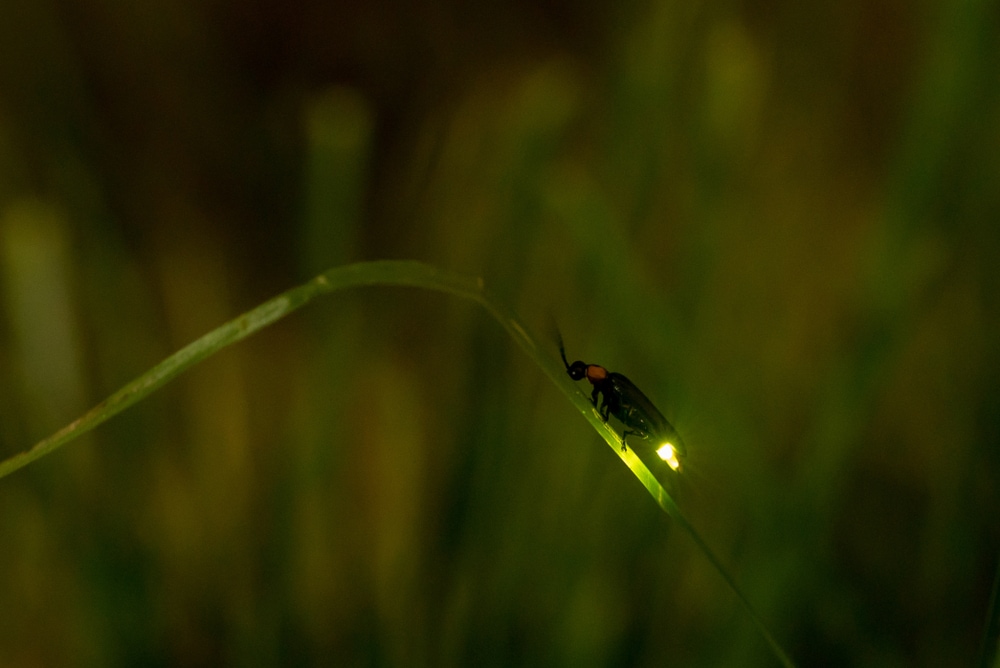
Fireflies have a wide range. Their habitat stretches over temperate and tropical regions on every continent, except Antarctica. I guess they’re not fans of sub-zero temperatures then!
Check out this photographer’s hunt for two species of Japanese fireflies here!
They like to live on vegetation in parks, gardens, woodland edges and meadows. Wetland areas are a good place to start looking for them.
What kind of vegetation do they live on? Firefly.org, which is a US based charity that recommends plants for encouraging fireflies, has this to say.
“Firefly-friendly plants need to do three things.
- Provide cover for females to lay their eggs,
- Provide cover for larvae,
- Provide operational cover for mature adults to signal each other.”
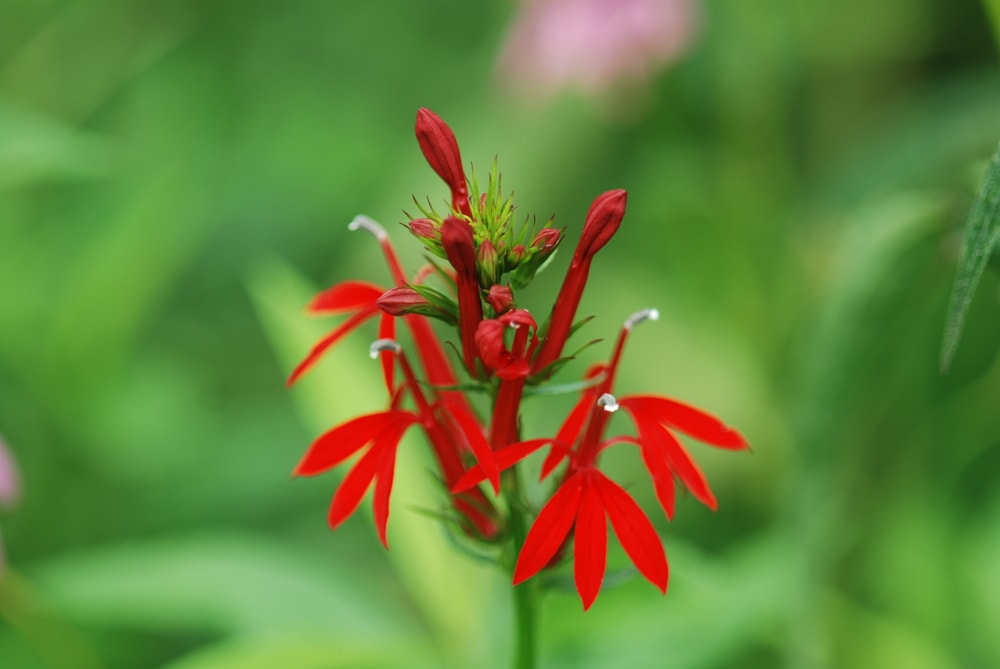
They have a long list of plants, which include grasses, forbs, vines, trees and woody plants. Many of these plants are from wetland areas, but they can also exist in drier climates.
As there are so many different species of fireflies, check what plants and habitat your local species likes to live on.
How Many Types of Fireflies Are There?
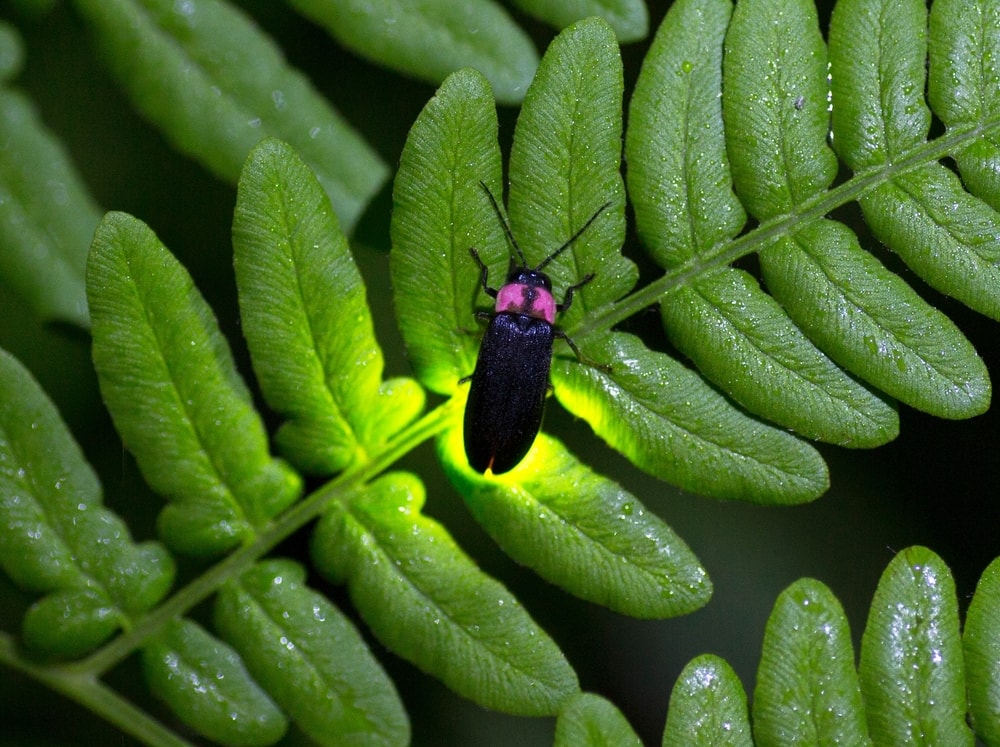
Worldwide, there are roughly 2,000 different species of fireflies. In North America alone there are over 170 species. Each of these species lives in a slightly different area and needs a different habitat. Some prefer boggy land, others woodland edges.
Different species can also occupy the same habitat. When this happens, they have special ways of being able to tell each other apart when it comes to mating season.
More on that later!
All fireflies belong to the family Lampyridae. Meet some of the species of firefly below!
Photinia
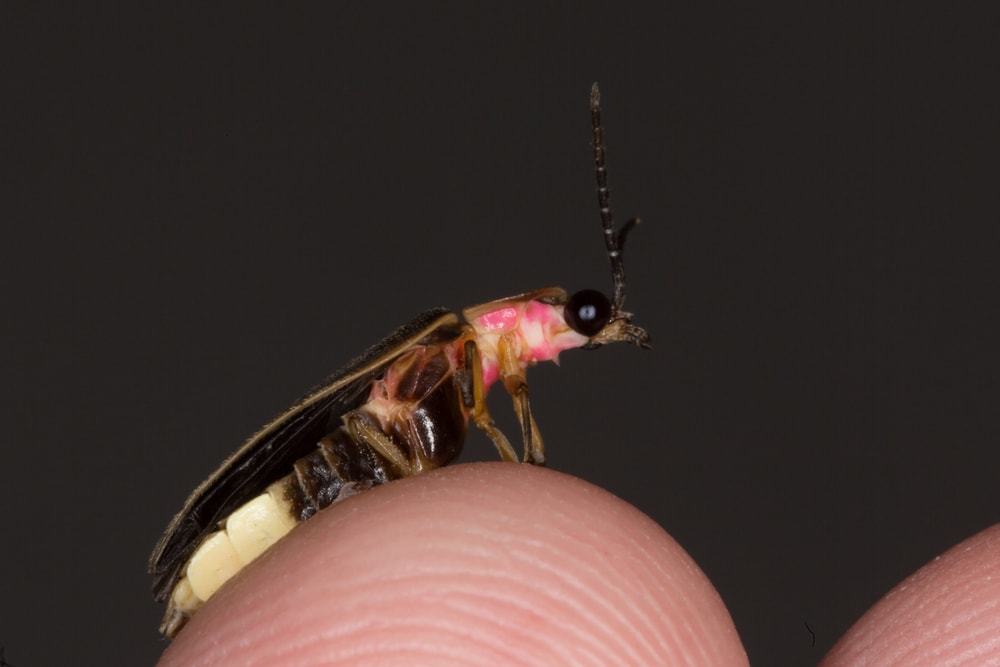
This is one of the most common species of fireflies, especially in North America. It’s half an inch (1.27cm) long.
Some of these species make lovely synchronized displays. The ‘Big Dipper’ or Photuris pyralis firefly, is what many Americans find in their back gardens at night.
Cratomorphini
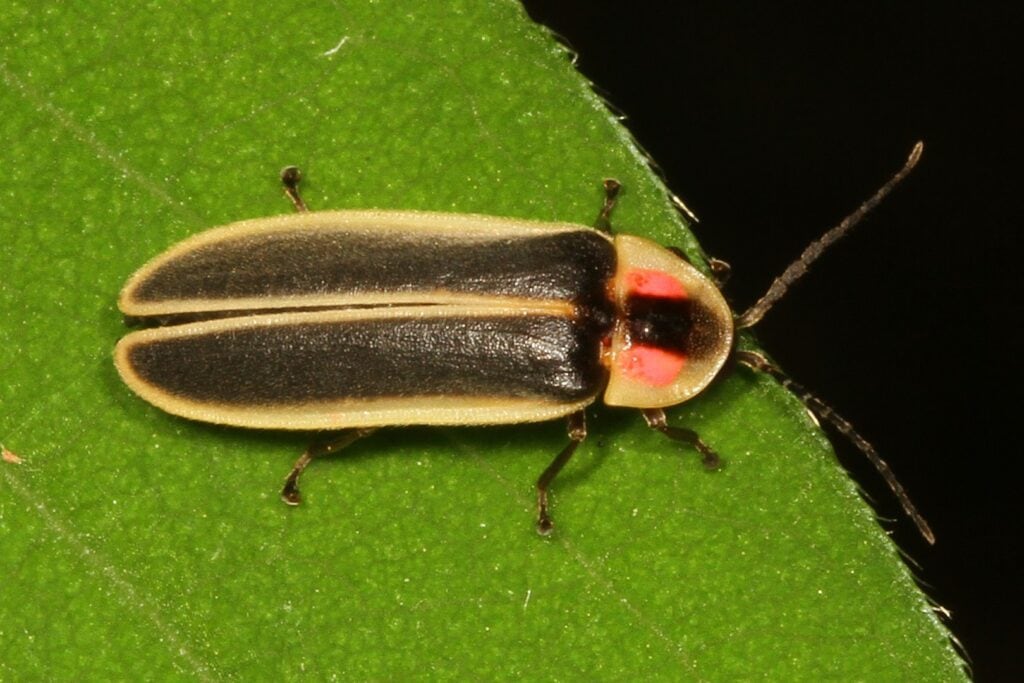
By Judy Gallagher – https://www.flickr.com/photos/52450054@N04/8992601798 / CC BY 2.0 / Wikimedia commons
The Pyractomena females make a signal like the spark from a campfire. It is yellow-orange like a spark, too!
Luciolinae
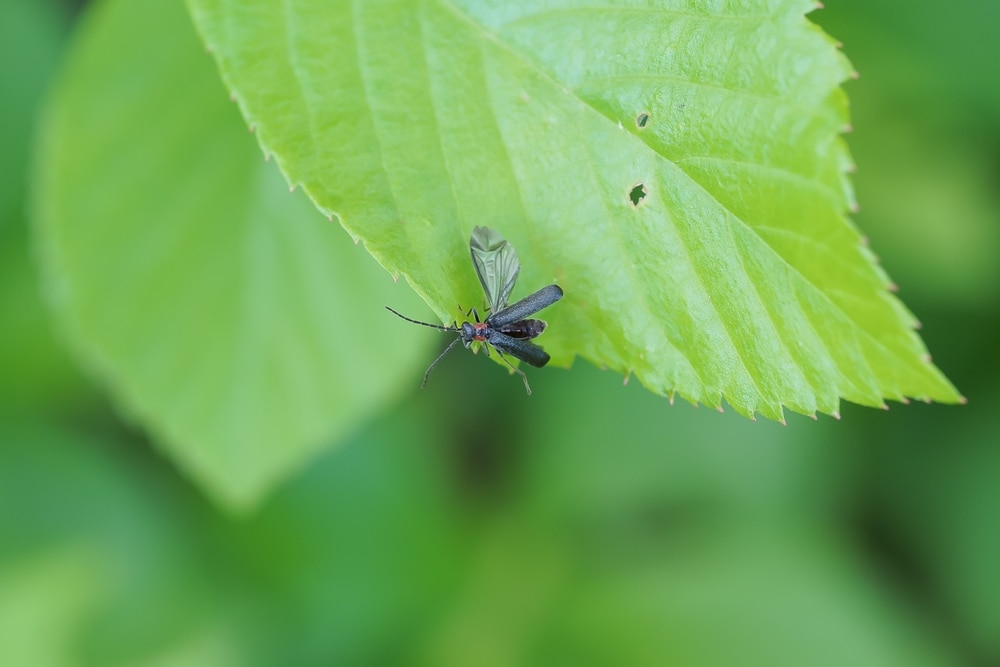
This subfamily of fireflies are common throughout Asia. they include Peroptyx., Luciola, Luciola lusitanica. Luciola are often found in Japan. In Japan, people believe that fireflies are the souls of the dead.
Photuris
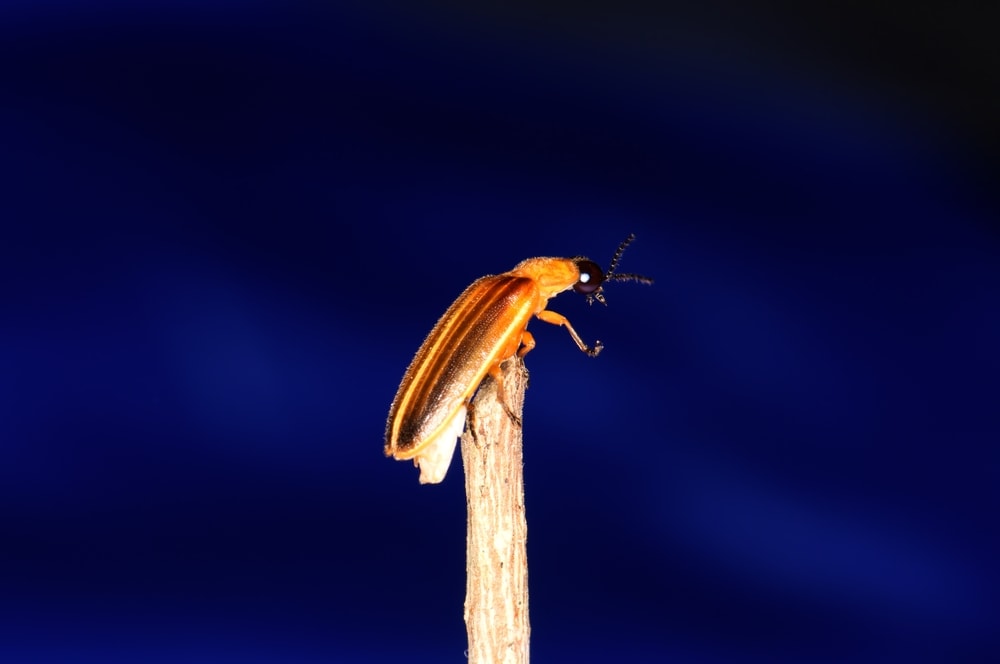
These species include the predatory females that feast on other species of firefly. The males are harmless! Photuris females are much larger – nearly 1inch (2.5cm) long. They have a darker green light. They are widespread across the US into Mexico.
Cyphonocerinae
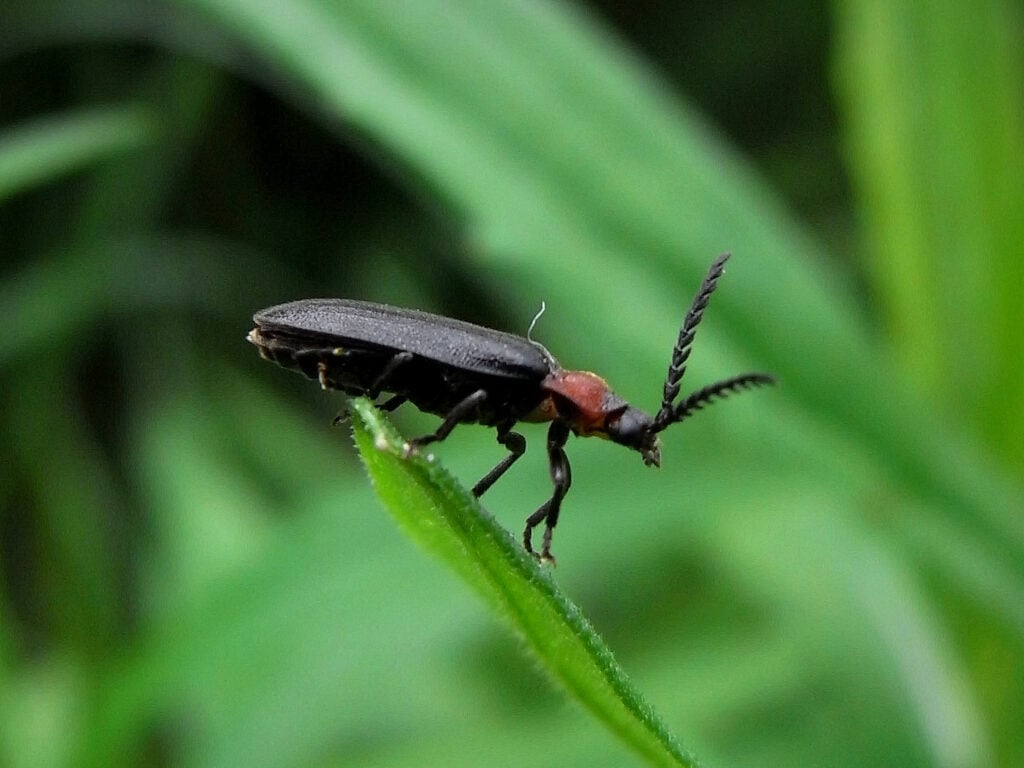
By derivative work: Dysmorodrepanis (talk)Cyphonocerus_ruficollis_2551723243.jpg: Ishikawa Ken – Cyphonocerus_ruficollis_2551723243.jpg / CC BY-SA 2.0 / Wikimedia commons
Scientists believe these are the most primitive species of firefly. They either don’t light up at all, or have a very weak light.
Phausis
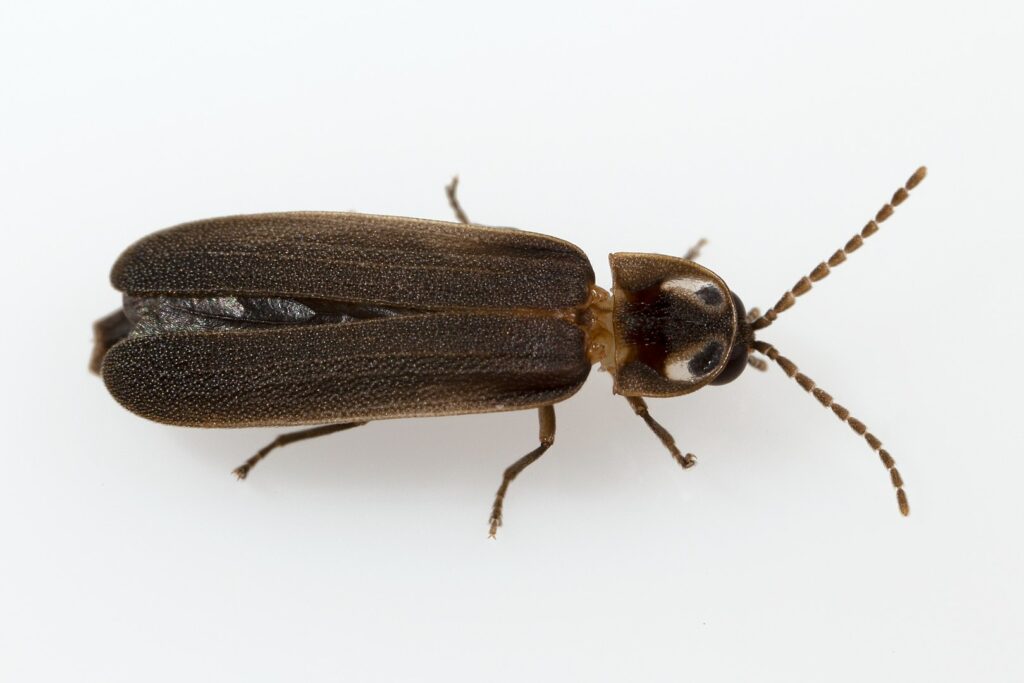
By Aggyrolemnoixytes – Own work / CC BY-SA 4.0 / Wikimedia commons
Also known as the Blue Ghost firefly, the females of this species are pale yellow or white and flightless. Males can fly. It’s thought that this enables the female to lay more eggs. These fireflies glow constantly with a spooky blue-green light.
Why Does an Adult Firefly Eat Another Adult Firefly?
This doesn’t happen with every species of firefly.
Female Photuris fireflies are the true maneaters. They trick male fireflies of other firefly species (such as Photinia fireflies) into trying to mate with them. They do this by mimicking the flash pattern of the male’s true species!
Photuris females are bigger and stronger than the Photinia firefly males. They are almost twice as big.
Once she has him where she wants him, the Photuris firefly female kills and eats the firefly male. Ouch!
She needs to do this to steal the protective toxins within the bodies of the other firefly species. Photuris females don’t have these themselves. These are called lucibofagins. She adds these to her eggs to protect them from predators.
Clever… but ruthless!
The male Photinia even brings this copycat killer a lovely wedding gift of nutritious food.
He sometimes escapes. If she doesn’t kill him quick enough, he secretes a goo that can gum up her jaws!
How Do Fireflies Produce Light?
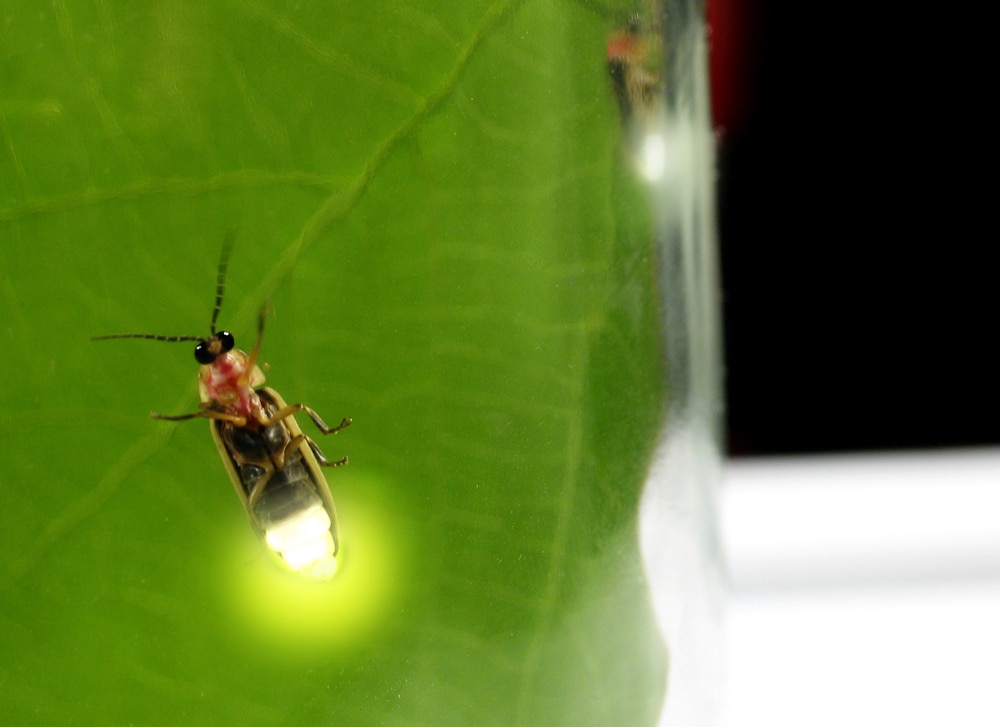
Fireflies produce light using bioluminescence. The process they use is so efficient, it converts almost 100% of the energy used into light, wasting hardly any as heat. Compare this to an incandescent light bulb, which is only 10% efficient!
How does it happen?
A firefly’s light organs are located in its abdomen.
- Within the light organs, oxygen is combined with a substance called luciferin. Luciferin comes from the word for the Christian God’s fallen archangel. It means ‘bringer of light’. Very apt.
- The organs use special enzymes to oxidize the luciferin. (This means they combine the luciferin with oxygen).
- This ‘excites’ the luciferin molecules, giving their electrons extra energy.
- Now they go back to a relaxed state (think the chill-out session after an exercise class!). When they do this they release the extra energy in the form of light.
You may also like: Types of Stink Bugs: Field Guide (Names & Photos)
Can Other Animals or Plants Use Bioluminescence?
It isn’t just fireflies that can do this, either. Many other creatures can do this too.
Some good examples are:
Anglerfish
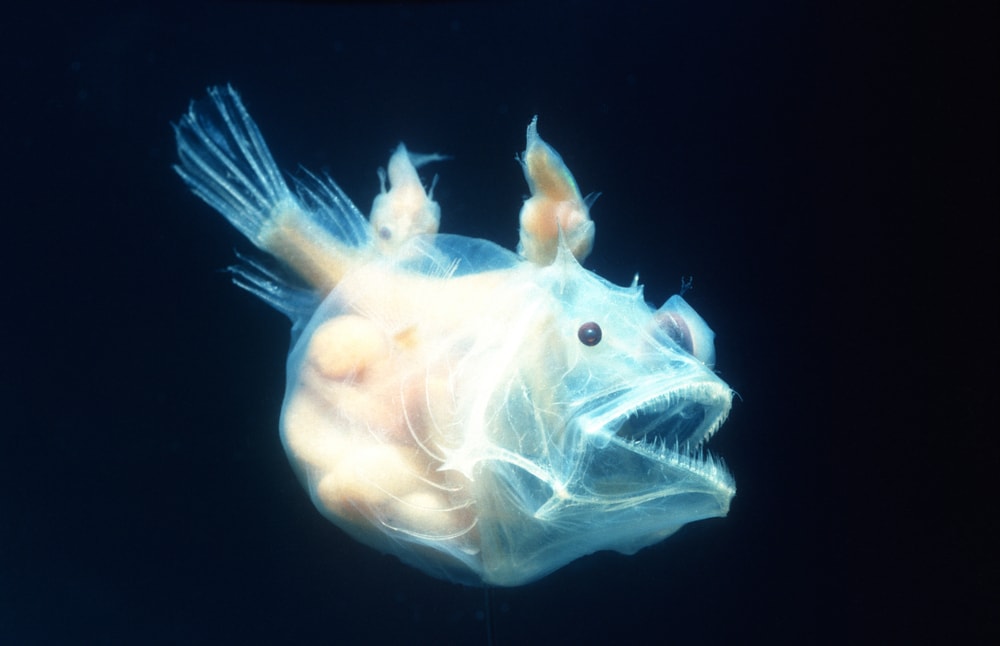
These flattened, huge-mouthed fish are not exactly blessed with good looks. They use bioluminescence on the end of a lure to attract small unsuspecting fish, which are then gulped up.
Dinoflagellates
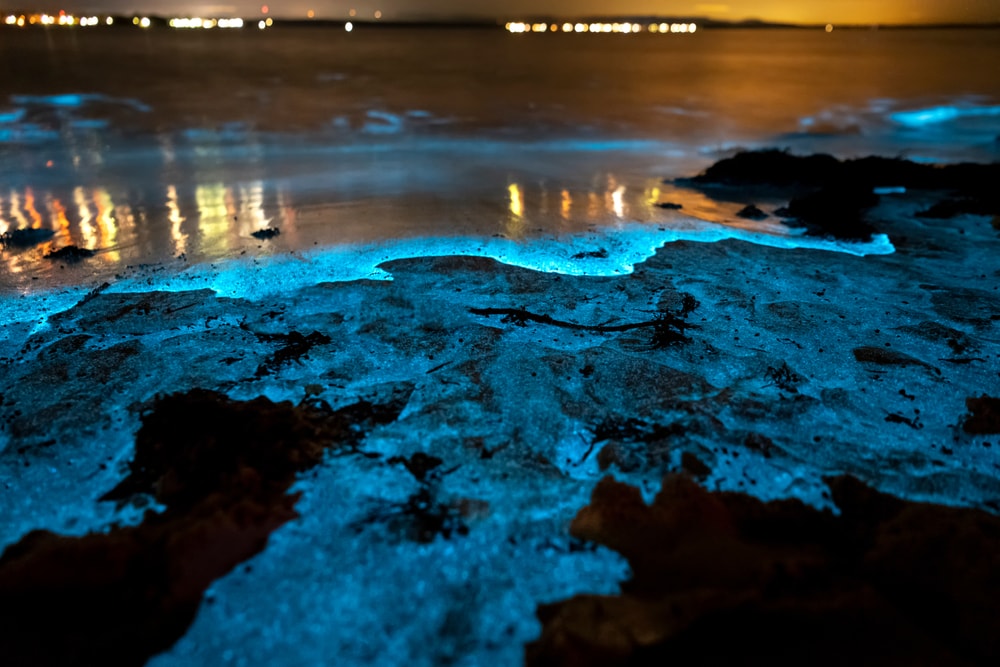
These tiny marine organisms create washes of glowing color in the ocean when they rise to the surface to feed. They can also be harmful when there are too many of them. This creates an algal bloom, known as a ‘Red Tide’.
Fungi
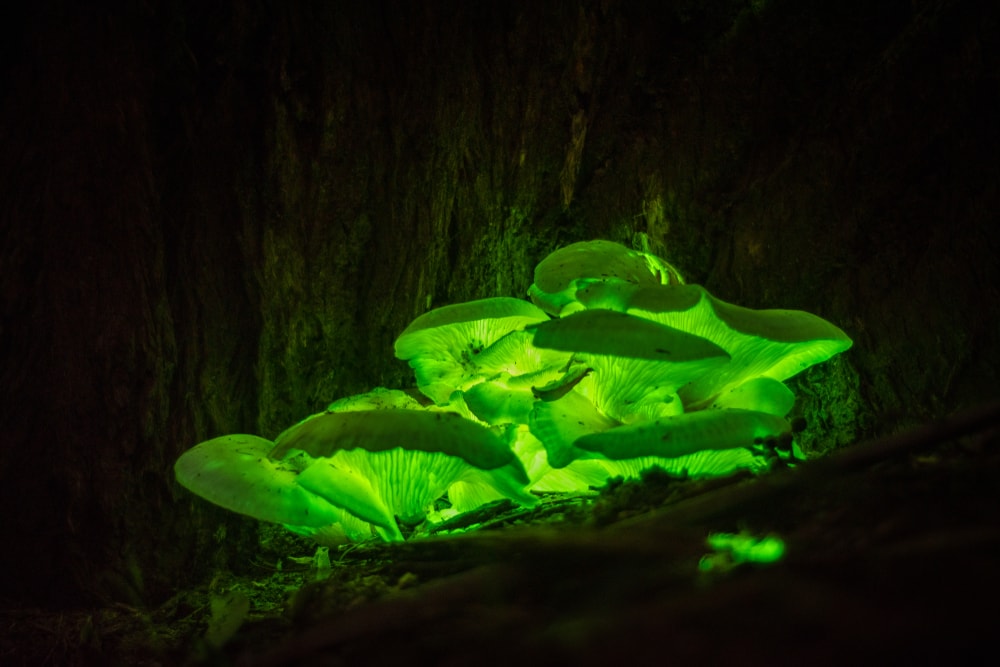
The Ghost Fungus (Omphalotus nidiformis) of Australia glows in the dark forests where it is found. Researchers still aren’t sure why they do this, but one theory is that this attracts insects that help spread the mushroom’s spores. The fungi again uses a form of luciferin.
You may also like: 43 Different Types Of Mushrooms: From Edible To Poisonous (Pictures And Chart)
Can Fireflies Control Their Light
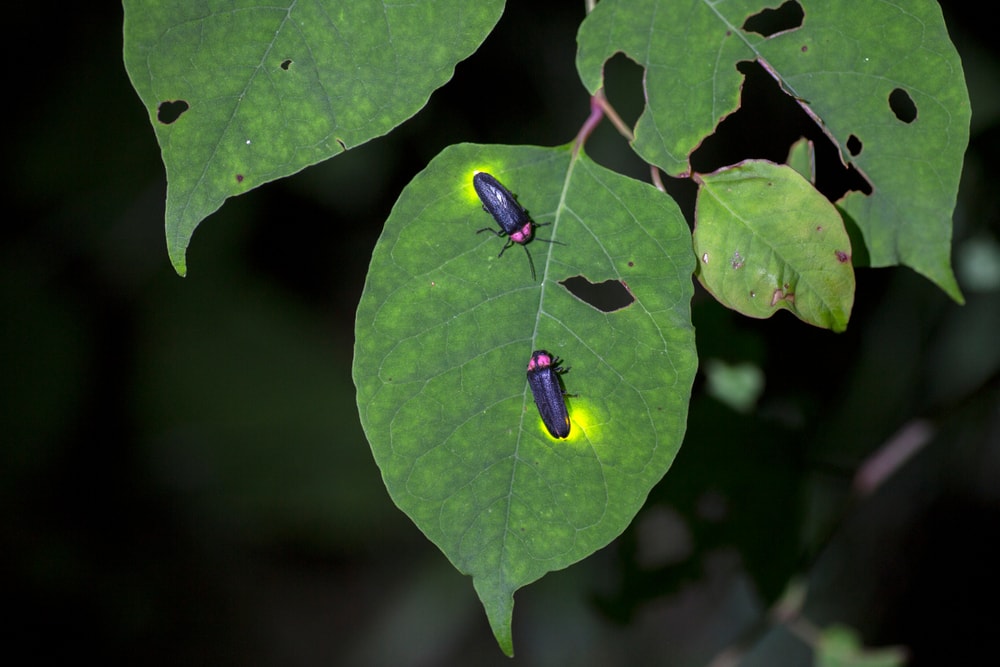
In short, yes.
Other creatures can control the level of light produced too, such as marine organisms. They can control the light reaction by regulating their brain processes and chemistry. They can change the amount of luciferin depending on whether they are looking for a soulmate or for food!
Bioluminescent creatures can often change the color of their light using pH (acid and alkaline balance).
Some creatures can even create a ‘bioluminescence bomb’. This is a package of luciferin bound up with oxygen. It lights up when a particular ion (like calcium) becomes present! This means bioluminescent creatures can choose when to shine brightest!
In fireflies, this amounts to the firefly regulating the amount of oxygen that gets to the light producing luciferin and enzymes.
Insects don’t get oxygen from breathing with lungs like we do. Instead, they absorb it over their body from holes and tubes called tracheoles.
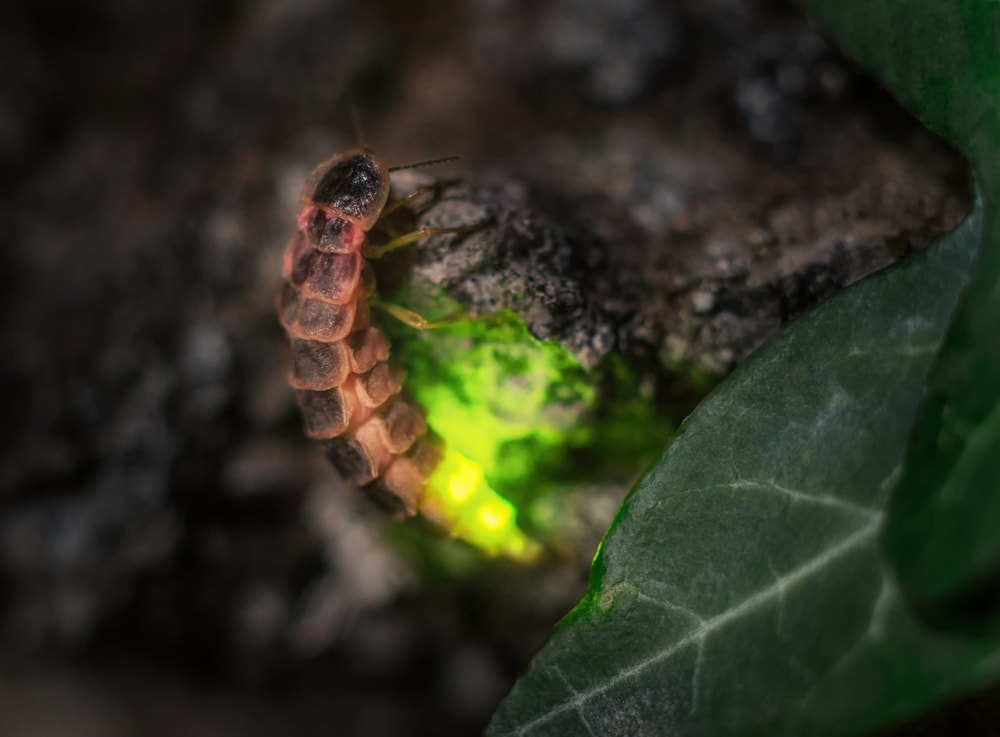
Amazingly, the fireflies produce nitric oxide gas! This allows oxygen to get to the chemical reaction taking place in the light organs. When the nitric oxide gas isn’t produced, the oxygen flow is shut off and the light organ goes dark.
Nitric oxide is an important molecule made by the body of animals and humans. It is also a major industrial pollutant! Power plants and incinerators produce it in quantities that are unhealthy for the environment.
This means fireflies can create a symphony of light, making patterns and beats in a sort of Morse code. Fireflies of the opposite sex find this irresistible!
(Crazily enough, nitric oxide is what makes impotence wonder drug Viagra work!)
You may also like: 16+ Different Types Of Bees: Field Guide Identification With Photo, Facts And More
How Do Fireflies Mate?
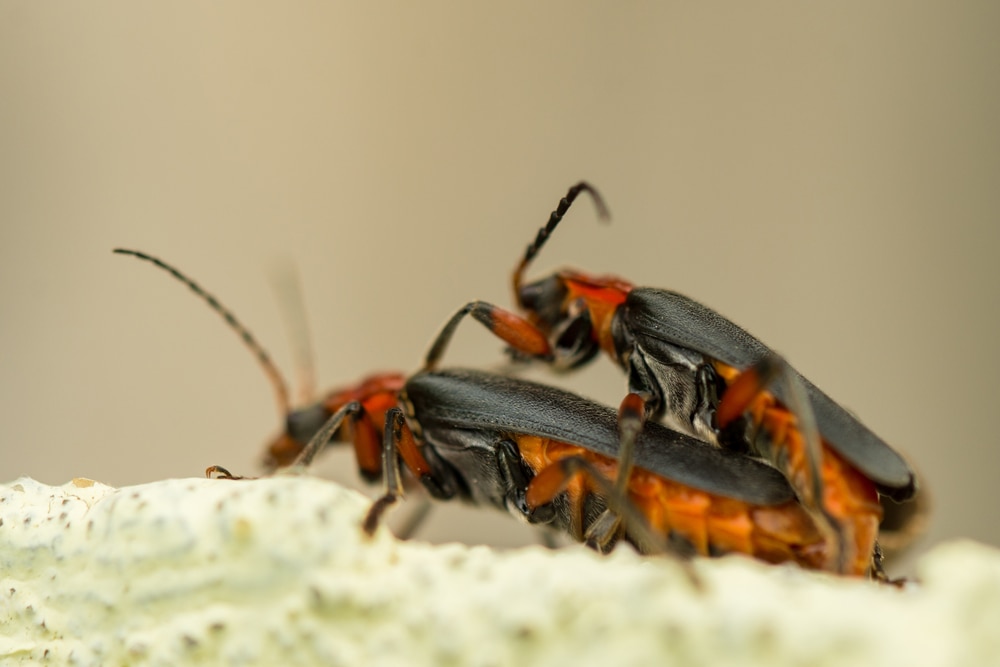
Male fireflies are by far the most active, roaming in search of a mate. Females are more sedentary, waiting on a particular plant for a male to come along with the right moves.
The Lynx Effect!
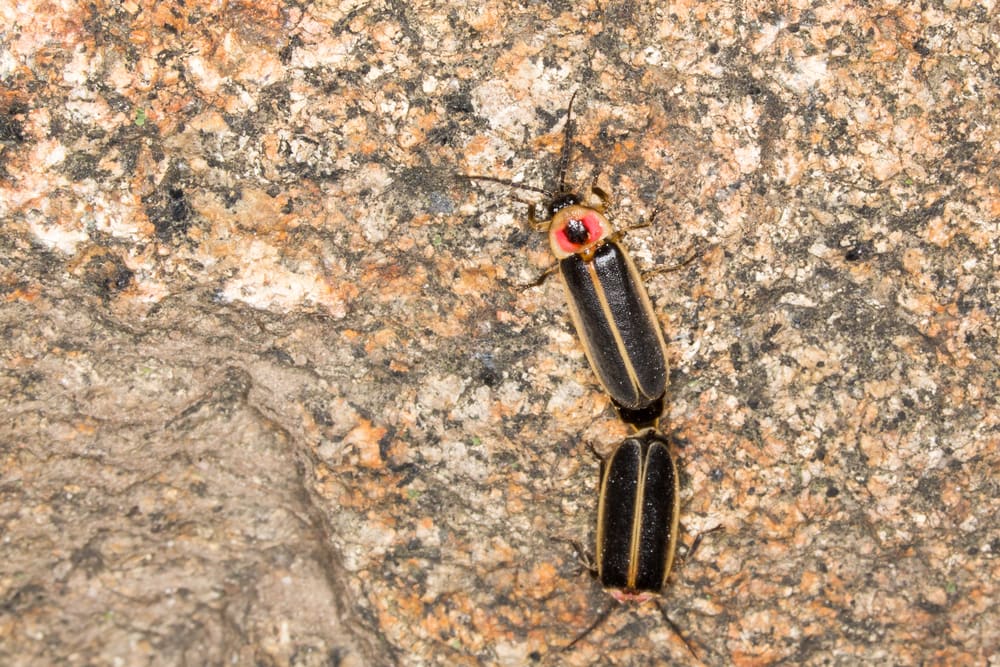
First off, not all fireflies use light to communicate. There are some that use pheromones. These are a type of smell caused by chemicals in the body of a living thing. The intention of a pheromone is to create a response in another living being.
We see this in many perfume and aftershave commercials. (The Lynx Effect!)
Human beings produce their own pheromones when attracted to someone, or angry, or scared. Perfumes and aftershave are just an extension of this.
Amazingly, this seems to be a tactic the most primitive fireflies use. It’s also an adaptation used by some modern firefly species attempting to avoid predation by Photuris females. By becoming diurnal (day time active), these species of firefly avoid the bioluminescent lure of female Photuris.
Because they are active in the day and not the night, these fireflies have re-evolved to transmit pheromones as well as (or instead of) light signals. It’s hard to see a tiny light in the midday sun!
The good news is… the males won’t see the light made by ‘femme fatale’ Photuris either.
Below is a diurnal (day-time active) species of firefly, Ellychnia.
Bioluminescence
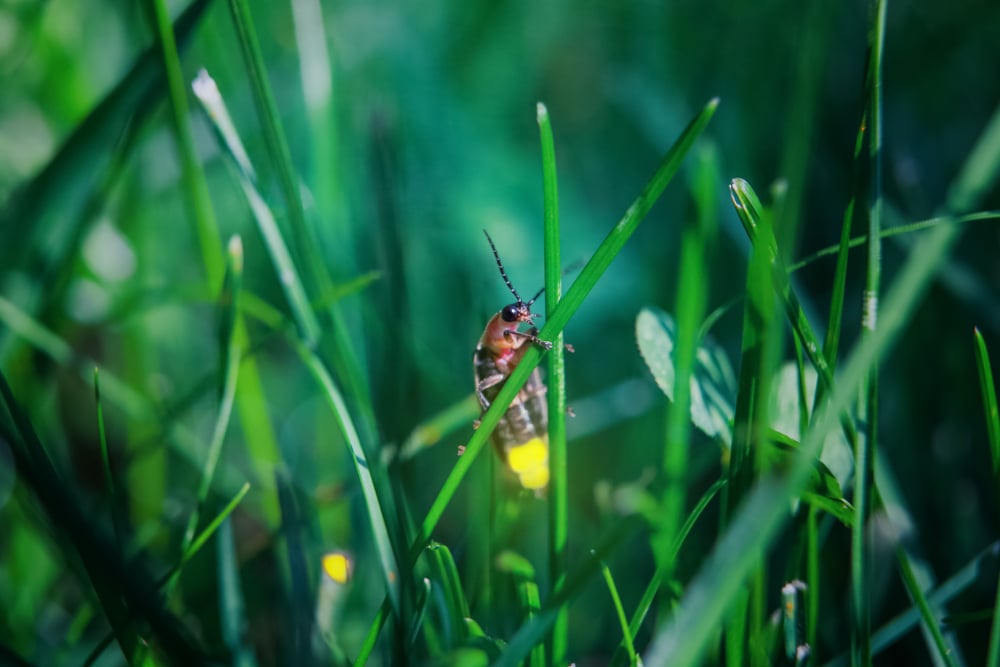
A more recent development in the world of fireflies is bioluminescence. As we said before, this means fireflies can create light… but not all light is created equal.
Each species of firefly has its own pattern of light flashes, which attract only those of its own species.
This has become a bit of an art form. Photinia males (known as ‘Big Dippers’ in the US) do a special dance where they swoop in a hook-like way. This makes a streak of light that looks like the letter ‘J’ or like a big dipper. Hence the name!
The Silent Disco
Different species of firefly that live in the same location have changed:
- the length of their flashes
- the pattern and rhythm of the flashes
- the color of their light!
A study on three species of Taiwanese fireflies, Abscondita cerata, Luciola kagiana, Luciola curtithorax, showed that all three of these factors helped researchers tell the fireflies apart. Color wasn’t that reliable. The best way to tell them apart was by the intervals between flashes.
The researchers used video with a computer program that could measure the light flashes of the fireflies. Before this, most people could only tell them apart by eye and experience!
Male fireflies at rest on a plant had a different flash pattern than when they were in flight, showing off their moves!
Synchronized flash dance
Photinius carolinus fireflies of Congaree National Park, US, synchronize with each other. This means they all flash on and off at the same time. Like the beautiful patterns synchronized swimmers make!
Their light is yellow-green. You can look for them near creeks and rivers in the Appalachian Mountains, US.
Another type of firefly, Photuris, is doing a synchronized flash dance.
(Photuris males do the dancing. Photuris females do the cannibalizing!)
You may also like: 18 Different Types Of Wasps: A Guide To Their Diversity + Chart And Photos
How Can I Tell a Male and Female Firefly Apart?

If you are lucky enough to be able to handle a live firefly, turn your new friend upside down. Look at its abdomen (the bottom half).
A male firefly of most firefly species usually has bigger light organs. These take up more of its abdomen sections. The female Photinia has only one glowing section of her abdomen whilst the male has two.
Some female fireflies do not light up at all – only the males do.
In the case of blue ghost fireflies (Phausis) the females have no wings and are pale white or yellow. The males have wings and are darker.
You’re also more likely to find female fireflies hiding bashfully on plant stalks. Males will be more likely to be winging it about, looking for the love of their life (or light!).
You may also like: How Long Do Cicadas Live? It Might Surprise You
How Long Does a Firefly Stay in the Larval Stage?
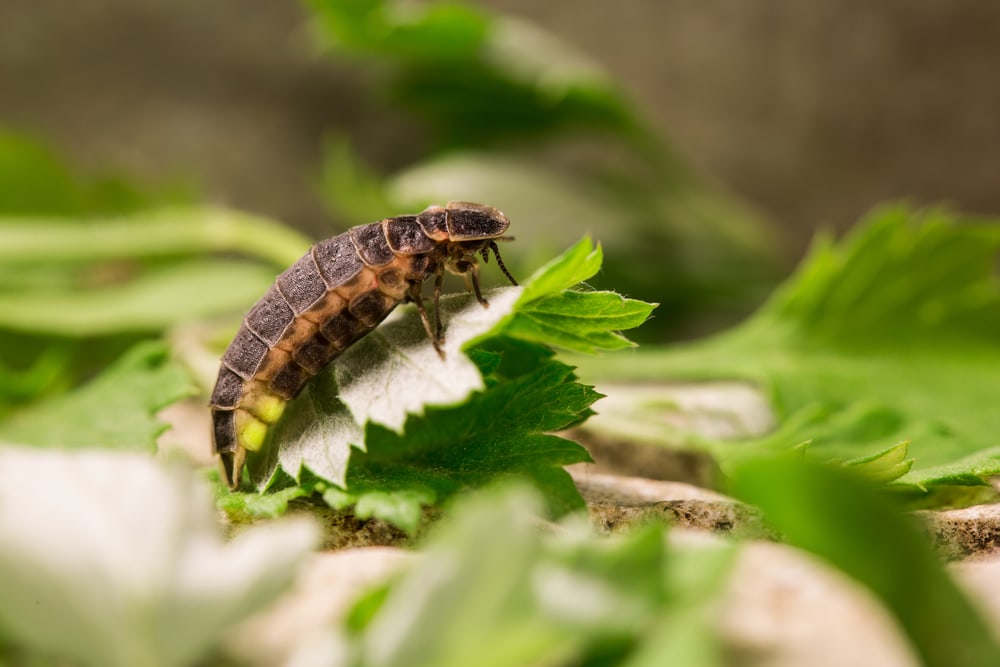
A firefly larva, (depending on species), can stay in the larval stage for 1 to 2 years. This is by far the majority of its life span. An adult firefly lives for on average 2-4 weeks.
That’s a hell of a lot of growing up to do in a few short weeks!!
So you can see why fireflies need to make the most of the time they have as adults!
Hotaru Matsuri – Japan’s Firefly Festival
What is the Hotaru Matsuri?
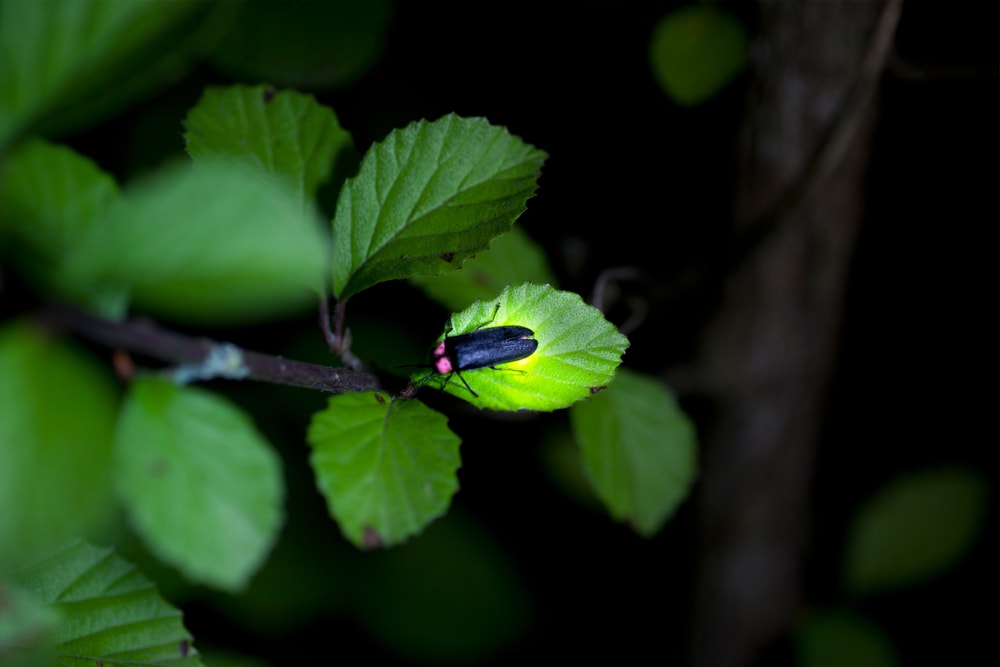
This famous festival of fireflies is held each year in Moryama, Japan. Crowds of all ages gather to admire the glowing dance of the region’s fireflies. These fireflies are especially large and bright.
The species is known as Genji fireflies (Luciola cruciata). They have a bright green glow.
What goes on at the festival?

Children and adults wear hats with glowing LED’s. You can listen to talks and view exhibits about firefly life, and buy food and gifts from stalls. Plus of course, travel the firefly viewing route to see what all the fuss is about!
The Hotaru Matsuri is held in summer at Moryama near Lake Biwa and the Suzuku Mountains.
There is also a firefly festival In Tokyo. – Kugayama Firefly Festival.
How did Moryama’s fireflies nearly become extinct?
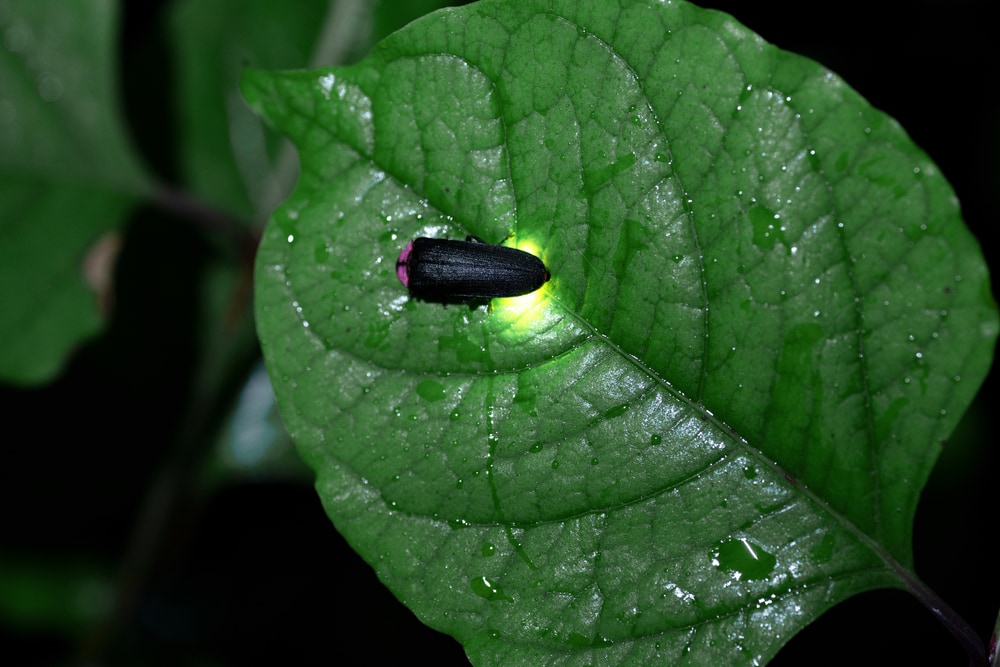
Fireflies used to be big business in imperial Japan.
Thousands were captured by professional firefly catchers each year. The glowing green fireflies were paraded through the streets in paper lanterns. After the parade they were sent to the capital to the Emperor and the imperial family.
In Japan it was historically believed that fireflies were the souls of the dead.
The catchers would also target female fireflies that had landed on the moss to lay their eggs. This meant the Genji fireflies rapidly got rarer and rarer as they didn’t have a chance to reproduce.
The water in the river and lake also became polluted with industrial waste. So much so that the water snails that the fireflies fed on couldn’t survive in the dirty water.
Dams and other water construction projects destroyed firefly habitat.
By 1920, the Genji fireflies were in serious danger of becoming extinct!
Who was Kiichiro Minami and why was he a hero?
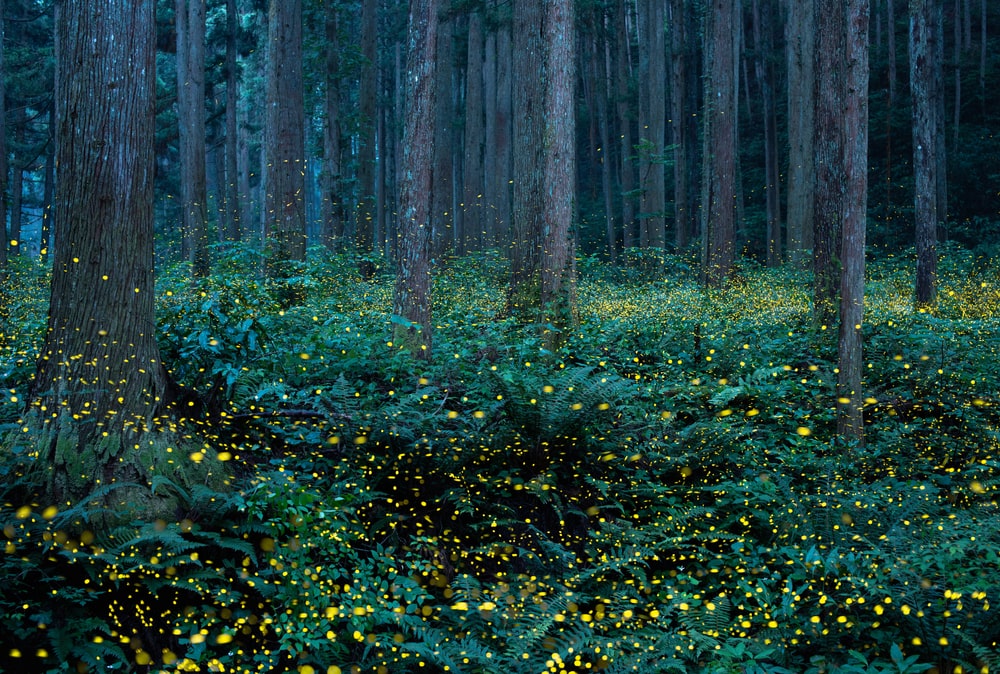
Kiichiro Minami was a young man living near the fireflies in Moryama. He loved to see the fireflies, but noticed they were becoming scarce. So he began to study what the fireflies ate and how they lived.
He wasn’t a scientist, but through careful observation he worked out the larvae ate kawanina water snails. He found the right kind of moss for the females to lay their eggs, and encouraged them to mate in captivity. He allowed the larvae to grow in pots.
By 1930, Kiichiro and his friends were releasing hundreds of captive bred fireflies back into the wild!
Local water clean up projects were started. In 1924 the government declared Moryama a Special Natural Monument. This meant the home of these beautiful fireflies was protected by law. Commercial firefly harvesting was banned.
Now, the Genji firefly remains a hauntingly beautiful symbol of the souls of the dead in Japan.
You may also like: 29 Different Types Of Butterflies – Pictures, Chart, Facts And Guide
How Can I Help Protect Fireflies?
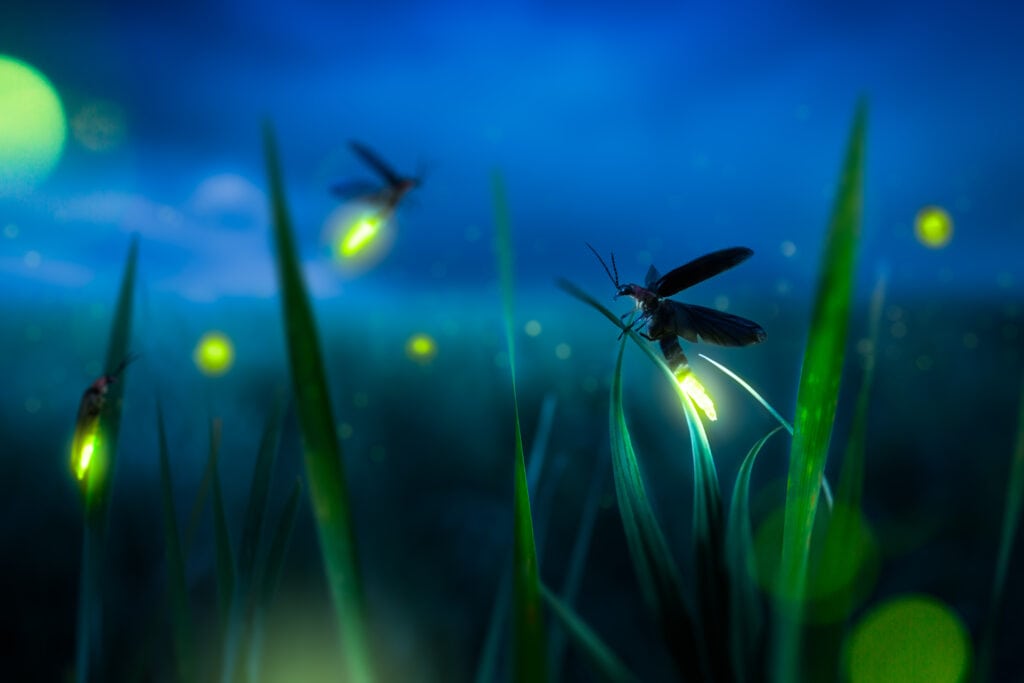
Want fireflies in your garden? If you want to help conserve these fascinating creatures, try these tips:
Fireflies have inspired films, books, and art throughout history. Here are some examples below.
Fireflies in Popular Culture
‘Grave of the Fireflies’ (1988) – this animation by Studio Ghibli charts the story of two young Japanese orphans who are thrown out by their aunt. They live in an abandoned bomb shelter and use fireflies for light. After many struggles the children die, but are reunited in the afterlife amidst clouds of fireflies.
Woman and Child Catching Fireflies. ca. 1793. Eishōsai Chōki Woodblock prints from Japan – during the Edo, Meiji and Teisho periods in Japan. These beautiful images containing fireflies were often printed on silk. You can see this artwork at the Metropolitan Museum of Art in New York.
‘Fireflies on Water’ by Yayoi Kusama – this is an infinity mirror room created by contemporary artist Yayoi Kusama. The artist, who is over 90, creates art based on childhood hallucinations. She opened this artwork to the public in Ohio, America in 2019. The artwork is a play on light and perception. She uses mirrors, plexiglass, lights and water to create the illusion of infinity.
‘Smitten’ by Brooke Sauer – this cyanotype print shows a girl hanging upside down surrounded by fireflies. The artist is inspired by the desire for harmony with nature. The print is all one color of indigo blue, so the interest is in the depth and details.
How Fireflies Have Influenced Technology!

Robot Communication
Physicist Rafael Sarfati and computer scientist Orit Peleg are helping to develop programs for robots based on firefly behaviour. They studied how fireflies synchronize with each other. They applied this to robots to help them work together.

Brighter, Scaly Light Bulbs!
Researchers at Syracuse University have already used firefly light as a basis for zero-energy light bulbs. Now they have gone further and developed an LED bulb that emits 55% more light. How? By studying the scales surrounding the light organs of Photinia fireflies.
The fireflies have special three layered scales that enhance the optical properties of their light. The researchers etched the same pattern onto their light bulbs using a laser. The result?
55% more light!
There’s more on this in this report by Chemical and Engineering News.

Mini Search and Rescue Robots
Scientists at MIT (Massachusetts Institute of Technology) in the US have developed tiny flying robots that can communicate using flashing light. They engineered soft muscles for the ‘wings’ of the robots that can also generate energy for the lights.
With robots this small, it’s hard to use heavy infrared sensors to communicate. Instead, the robot lights can be tracked using three smartphones instead!
Search and rescue bots could use their light to signal for help when they find someone in a collapsed building, for example.
These robots look a bit like drones, but on a much smaller level. They could get into spaces impossible for humans and larger robots.

Seeing Body Processes without Invasive Surgery
Luciferin (the chemical fireflies use to make light) is being used to view processes inside the human body that cannot be seen otherwise. The adapted luciferin can travel through the body to parts like the brain. Doctors can then view processes that are too sensitive for surgery or more invasive methods.
In tests on mice, luciferin is small enough to get through the blood-brain barrier. It has potential to be a delivery agent for drugs. Now that’s gotta beat the pizza boy!
You may also like: How Long Do Bees Live? Everything You Need to Know About the Life of a Bee
What Threatens the Existence of Fireflies?

There are several ways that fireflies are threatened in modern times.
- Habitat loss – due to building on wetlands that fireflies need for habitat. Such as the residential development on Bethany Beach, US.
- Light pollution – bright street and garden lights really cramp a firefly’s style when they are trying to woo a female! As cities grow, this is a real problem for firefly survival. Three-quarters of US firefly species are nocturnal and use light to communicate.
- Pesticides – fireflies can be affected by chemicals from farms and gardens, or by eating contaminated prey. Herbicides that kill off host plants are also not helping.
- Climate change – this affects water levels, causing drought and/or floods. Neither of which are on a firefly’s bucket list…
- Water projects such as irrigation and dams dry out firefly habitats.
Fireflies FAQs
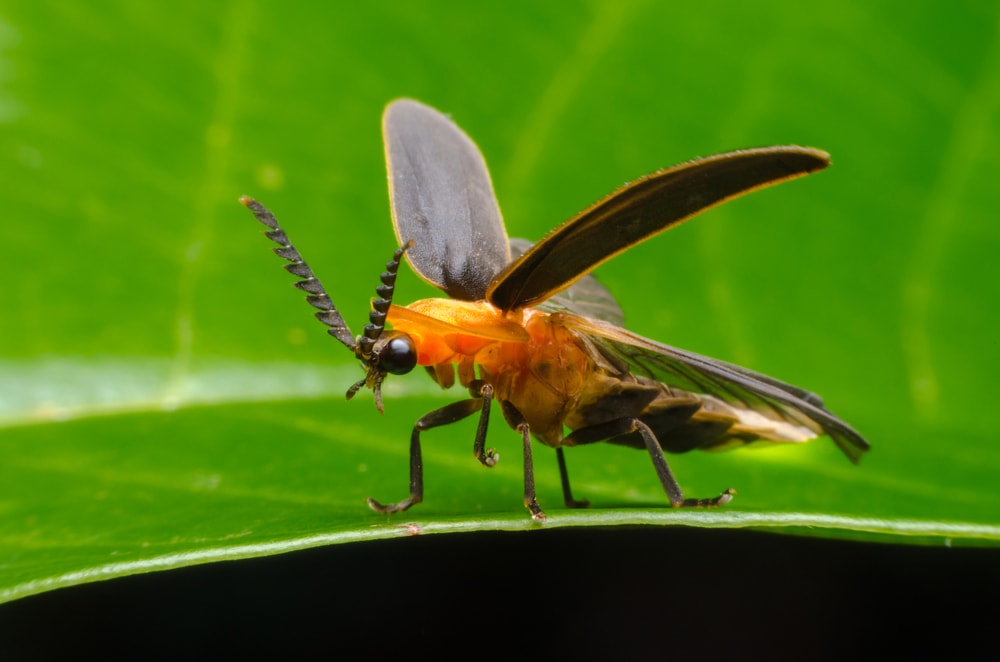
What do fireflies need to survive?
Fireflies need ground cover plants to hide in and live on. Their larvae need a thick cover of leaf litter to create a moist habitat for their favored prey – slugs and snails.
They usually need to be close to a source of water. They also need darkness so they can signal properly!
Does it hurt fireflies to catch them?
You can catch fireflies to look at them if you use a net and are gentle.
Place them in a jar with holes pricked in the lid for air. Put a damp paper in or mist with a spray regularly to keep the air humid. If you give them apple slices they will feed on the juice! Don’t let them dry out – houses are generally too dry for fireflies
Do other animals eat fireflies?
Fireflies have toxins in their bodies which protect them from predation by a lot of animals. (Except female Photuris!)
This means you shouldn’t try feeding pets such as snakes or lizards with fireflies. Your pets could get ill. Fireflies actually shed bitter drops of blood when attacked! This is called ‘reflex bleeding’. Some lizards, called Anoles, and some birds are resistant to firefly toxins.
Are fireflies good to have around?
Fireflies are harmless to humans. They control pests in the garden such as slugs and snails by eating them. The chemicals they contain – luciferin and luciferase – are used in medical research in the fight against cancer, multiple sclerosis, heart disease and cystic fibrosis.
Also, they set the scene for romantic spring nights! So, yes, fireflies are great neighbors to have around!
How long do fireflies live?
The adult fireflies don’t live very long. The time varies species by species, but a normal adult firefly lifespan is from 2 to 4 weeks. The larvae can live much longer – for 1 to 2 years in some cases. Most of a firefly’s life is spent as a juvenile!
Do firefly larvae glow too?
Yes, and in most species the female firefly’s eggs glow as well. This shows predators that the larvae and eggs are protected by toxins.








